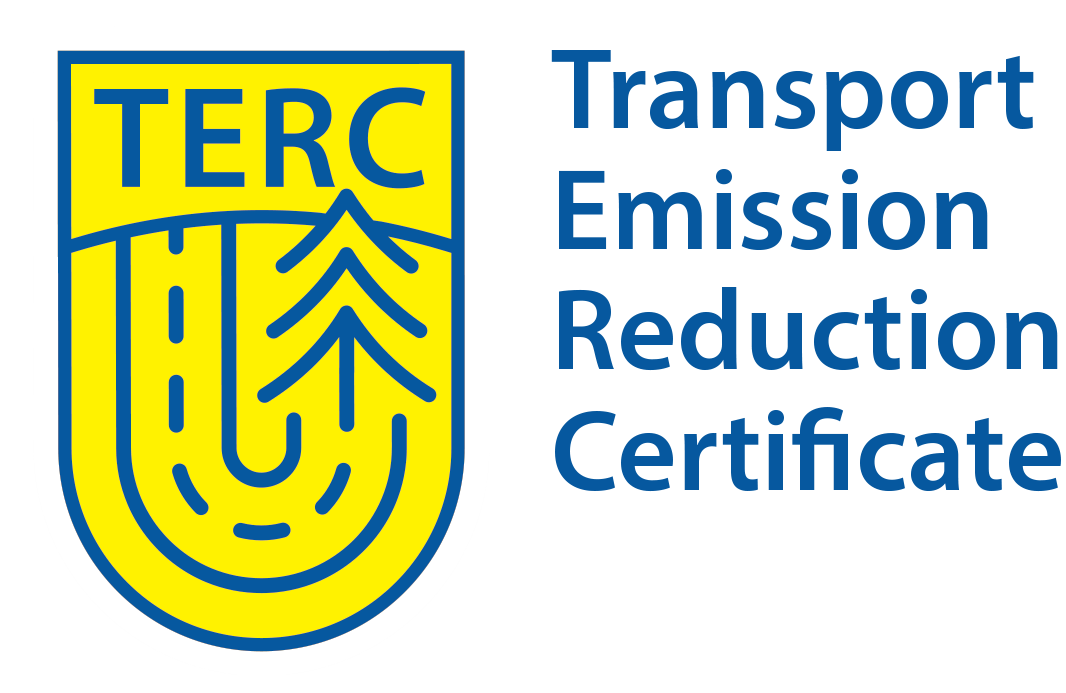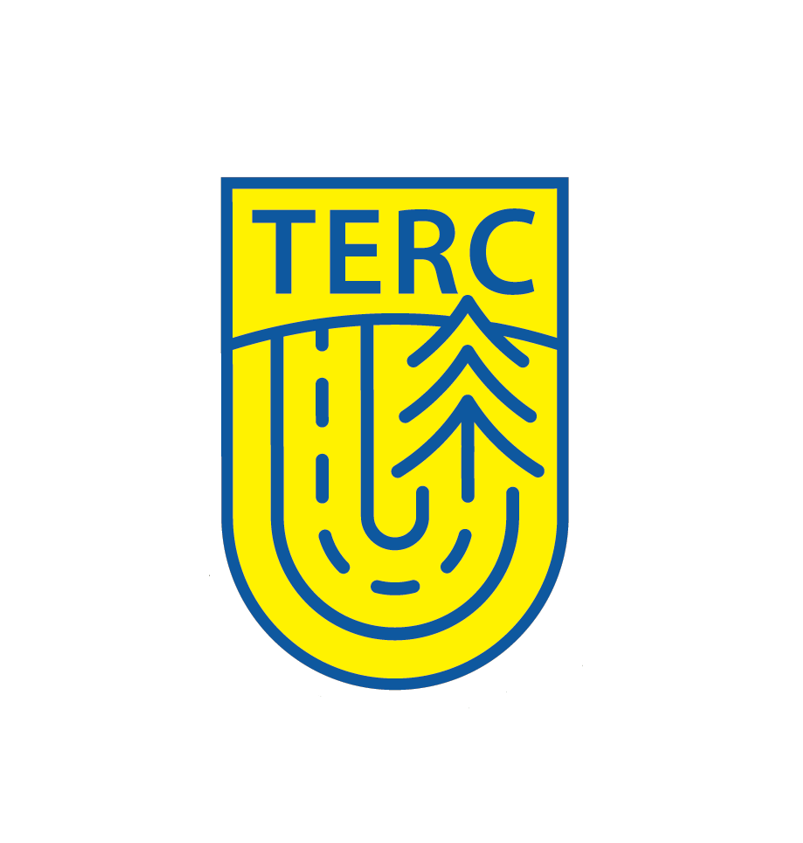
Frequently Asked Questions
-
A TERC is a tradable digital certificate representing the full life cycle greenhouse gas (GHG) emissions of biofuel production and usage. It is the primary instrument in a market-based initiative aimed at driving down the carbon intensity of transportation fuel in the United States.
-
The Transport Emission Reduction Certificate (TERC) Program was launched in June 2023 with the introduction of the Digital Ethanol methodology. The program expanded this year in November with the introduction of the methodology for TERCs for biomass-based diesel, which encompasses Digital RD and Digital Biodiesel.
The program aims to accelerate the decarbonization of the U.S. transportation sector by focusing on low-carbon fuels within the fuel-vehicle system. This voluntary carbon program, driven by a market-based mechanism, fosters innovation in clean fuel technologies and advances the transition to a low-carbon economy by providing organizations with a pathway to address their sustainability goals through investment in scaling low-carbon solutions.
-
Revenue from the sale of TERCs goes back to low-carbon fuel producers to incentivize carbon-reducing innovation, expanding the benefits of a regulated LCFS into the voluntary space – expanding decarbonization of the fuel pool, avoiding emissions from transportation and logistics applications, and validating ESG commitments of the companies who acquire them.
Buyers with large scope 3 GHG footprints are investing back into their own value chain by promoting the reduction of carbon intensity of the fuels that currently power their businesses.
-
No, a TERC is not a traditional carbon offset.
-
A carbon offset represents a reduction in GHG from a specific project or activity. Carbon offsets are typically generated by projects that avoid, reduce, or remove carbon dioxide (CO2) or other greenhouse gases from the atmosphere, such as reforestation, renewable energy, or energy efficiency projects. Companies and individuals can purchase carbon offsets to compensate for their own emissions or to achieve carbon neutrality. The purchase of carbon offsets supports the development of these projects.
TERCs are a market-based incentive program intended to continually reduce the carbon intensity of transportation fuels over the course of time.
Both instruments can enable risk mitigation for organizations with net-zero targets, provide transparency in measurement of carbon reductions, and fund the transition to a low-carbon economy.
-
Only obligated parties can participate in regulated LCFS markets. As part of the TERC Program, biofuel producers with product that doesn’t go to a regulated market, voluntarily choose to undergo the scrutiny of an annual carbon intensity verification conducted by an independent third-party engineering and accounting firm. Producers with fuel that falls under the mandated baseline for program participation generate TERCs contingent with GHG performance of their fuel.
Voluntary buyers can acquire TERCs to claim emission mitigation.
-
After a verification is performed to authenticate the carbon intensity of the fuel considered in the program, a second verification is done to ensure that only biofuel volumes and emission reductions outside of regulated markets are considered.
Each TERC is serialized and accounted for individually on the Xpansiv Digital Fuels Registry™.
-
TERC follows the LCFS framework where decarbonization of the transportation sector is achieved by encouraging the use (and blending) of low-carbon transportation fuels into the fuel supply. The assessment of carbon reductions achieved with TERCS will, therefore, also be consistent with the claim methodology practiced by currently operating LCFS frameworks. As a result, TERC does not fully fit the requirements of emission additionality as described in the GHG Protocol.
-
TERCs are issued, transacted, and retired on Xpansiv’s Digital Fuels™ Registry.
The Xpansiv Digital Fuels™ Program establishes a new class of tradeable, standardized environmental assets that enable market participants to define, record, and transact the environmental attributes of energy. For specific units of energy production, transport, and use, a corresponding digital twin is registered that conveys environmental performance claims across the supply chain—substantiated by auditable data—in order to drive investment in low-carbon technologies, environmental sensing, data analytics, and next-generation standards and verification systems.
-
Renewable fuel producers are required to meet a certain carbon intensity (CI) standard for their products, measured in grams of carbon dioxide equivalent (CO2e) per megajoule (MJ) of energy to participate in the TERC Program. The CI is determined through a well-to-wheel life cycle analysis, or a measurement of emissions of the fuel from its feedstock, production, transportation, distribution, and use.
When producers create a product with carbon intensity below a specified baseline, they are eligible to generate TERCs based on the difference. The lower the CI, the more certificates can be generated. The baseline decreases year-over-year, incentivizing fuel producers to continually find ways to reduce CI. For more information on how TERCs are quantified, see the Quantification Standard.
-
Certificates can be issued through the TERC Program by accounting for the full well-to-wheel carbon intensity (GHG footprint) of the physical fuel. This includes emissions from feedstock production, feedstock transportation, fuel and co-product generation, fuel transportation, distribution, and combustion. The carbon intensity is calculated using lifecycle analysis, based on a version of Argonne’s Greenhouse Gases, Regulated Emissions, and Energy Use in Transportation (GREET) Model, similar to the methodology employed by California’s Low Carbon Fuel Standard (LCFS).
The calculated carbon intensity is compared against a benchmark representing petroleum alternatives. This benchmark decreases over time to drive greater emissions reductions. Certificates are generated based on the environmental attributes of the fuel, measured in metric tons of CO2e, representing the difference in emissions between the low-carbon fuel and its petroleum-based counterpart.
-
Item desTERCs can be unbundled from the physical low-carbon fuel and sold separately to third parties interested in claiming the environmental attribute, even when physical access to the low-carbon fuel is not possible. Much like renewable energy certificates (RECs)—which establish a 1:1 correspondence between grey MWhs sourced from the grid and green MWh claims procured—TERCs allow end-users to purchase the right to claim the low-carbon attributes of alternative transportation fuels. This mechanism incentivizes ongoing decarbonization in the fuel sector while offering flexibility to corporations seeking to align with sustainability goals.
That being said, TERCs are fuel-level certificates. For emissions from diesel trucks to be included in the calculation, a corporation must first account for its own diesel fuel use and related carbon emissions. This requires quantifying the emissions generated and identifying the proper Scope 1 (direct emissions from company-owned vehicles) or Scope 3 (emissions from contracted transport or supply chains) bucket. TERCs can then be applied to offset these emissions, reflecting the substitution of diesel with low-carbon fuels such as biodiesel or renewable diesel.
cription -
Currently, ethanol producers based in the United States are eligible to create and sell TERC credits.
-
TERCs will be generated annually for ethanol production facilities only after calculation and independent, third-party verification of CI score for eligible fuel, and verification of product volumes produced and distributed to a qualifying jurisdiction. For more information, see Verification Standard.
-
TERC pricing is dynamic and benchmarked from a portfolio of comparable voluntary environmental commodity contracts. They are traded in over-the-counter transactions.
-
The Transport Emission Reduction Certificate (TERC) program has the potential to significantly benefit the economies of communities involved in the production of raw materials and biofuels. By establishing a market for low-carbon fuel attributes, TERCs incentivize the increased production of green fuels. Growing demand directly supports local economies by creating jobs in agriculture, biofuel production, and related supply chains. These benefits could be particularly impactful in rural regions, where feedstocks are grown, and biofuel production facilities are often located, fostering economic growth and resilience in these communities.
-
Corporate emission reduction measures are imperative in the race to net-zero. A company with mitigation goals should invest in improving energy efficiency, adopting renewable energy sources, optimizing logistics, and implementing sustainable practices in operations. However, the transportation sector faces particularly challenging and capital-intensive hurdles to abatement. Companies with large Scope 3 emissions can claim their sustainable energy choice with the purchase of TERCs and reduce the environmental impact from the fuels they use regularly. The certificates can be retired through the Xpansiv registry toward environmental stewardship goals.
Transparent communication to stakeholders about carbon reduction efforts are essential through sustainability reports, corporate social responsibility initiatives, and public statements.
-
The TERC Program currently focuses on fuels for ground transportation, including ethanol, renewable diesel, and biodiesel. Additionally, an EV methodology is under development, and other transportation fuels are being considered for future inclusion.

